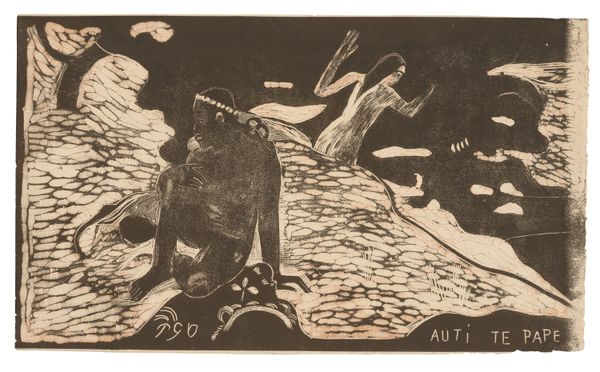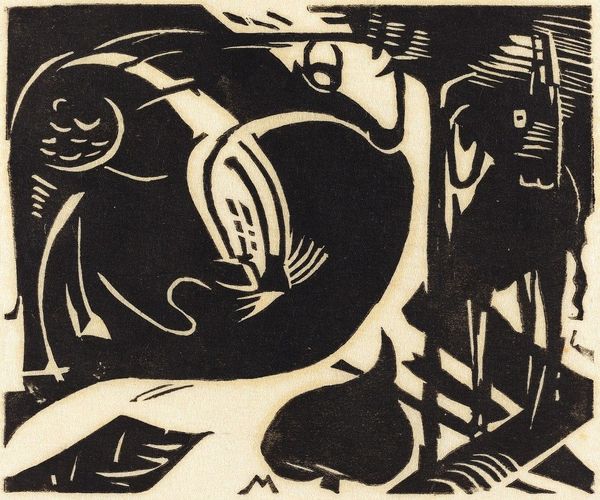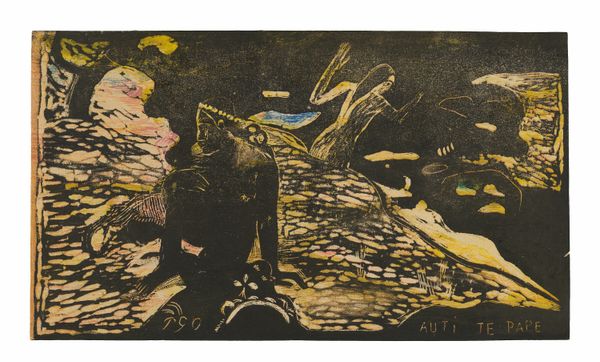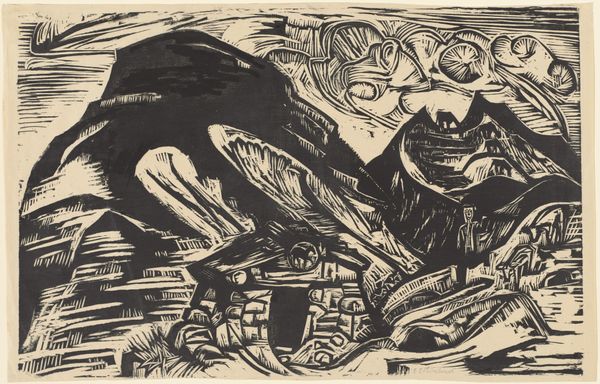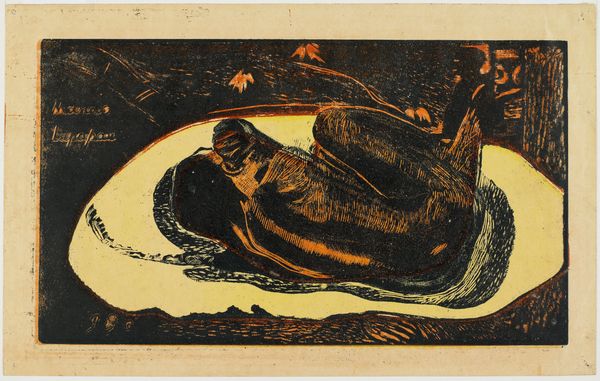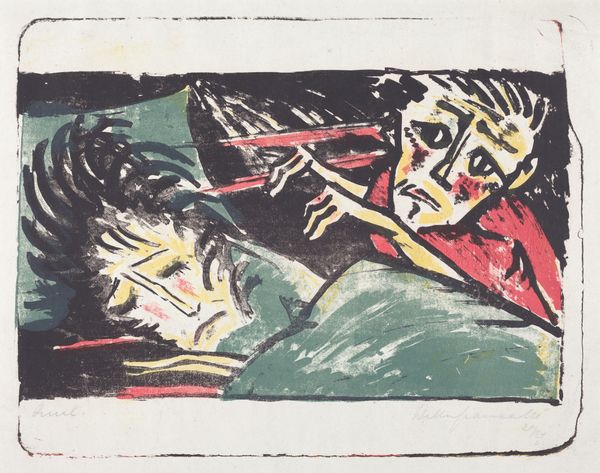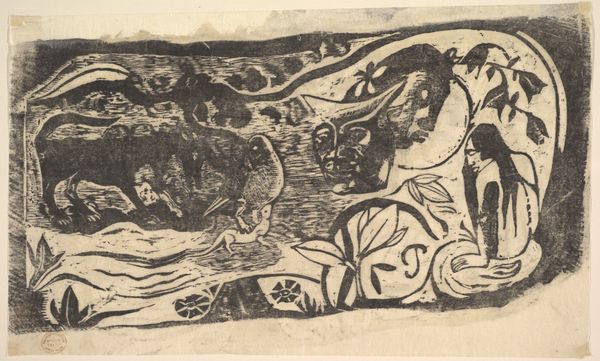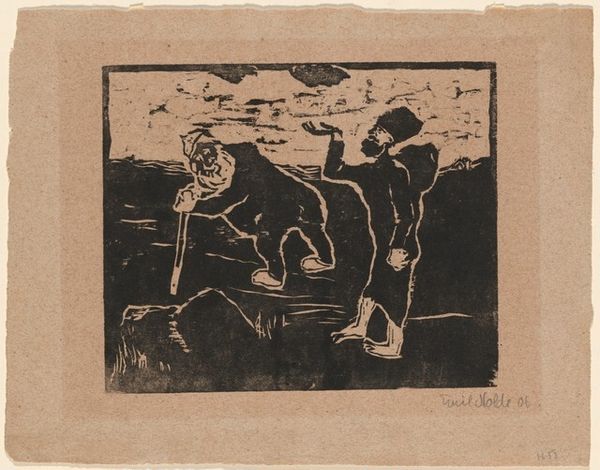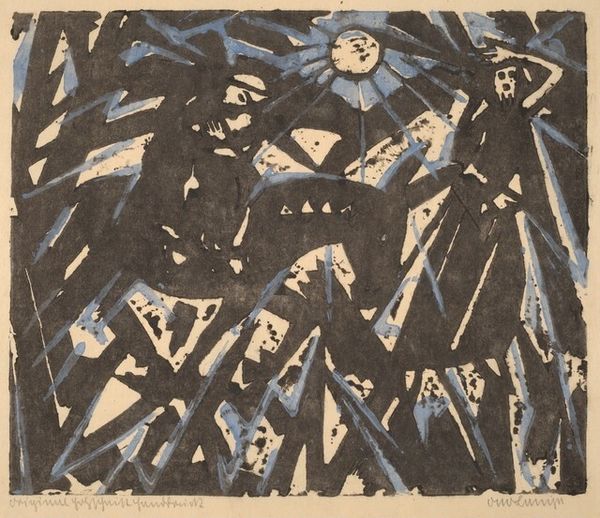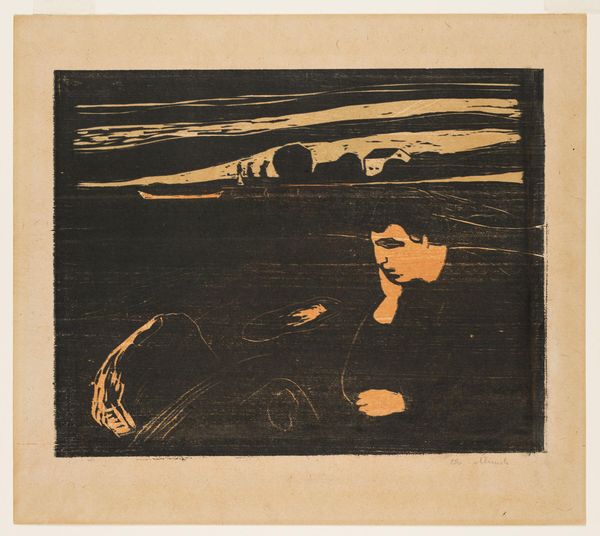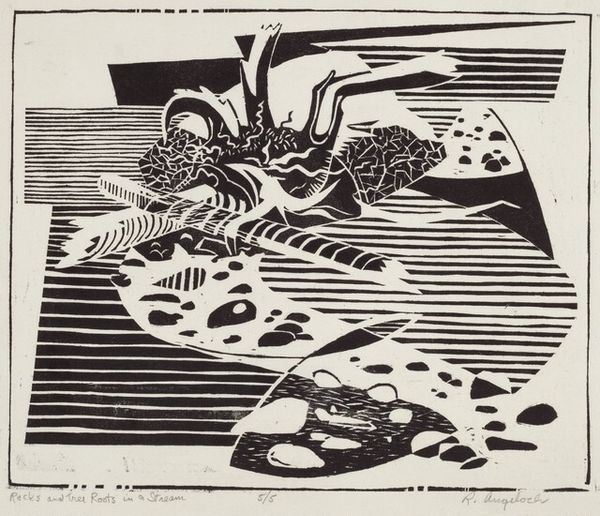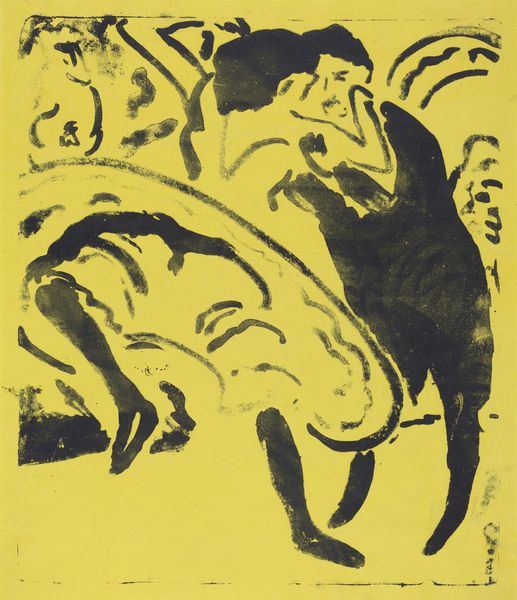
print, woodcut
#
figurative
#
narrative-art
# print
#
landscape
#
caricature
#
figuration
#
linocut print
#
woodcut
#
symbolism
#
post-impressionism
Copyright: Public Domain: Artvee
Curator: This is Paul Gauguin's "Auti te Pape," a striking woodcut and linocut print created between 1894 and 1895. Editor: The composition really grabs you, doesn't it? Such strong contrast between the yellow and dark tones; almost like a dreamscape. There's a real primal feel here. Curator: Indeed. Gauguin's use of contrasting colors, primarily those blocks of saturated yellows, serves to flatten the picture plane, eschewing traditional Western perspective for a more symbolic, evocative space. This deliberate distortion heightens the feeling of being transported. Editor: It’s compelling how the artist simplifies form to communicate deeper symbolic intent. These simplified shapes also amplify the composition's visual power and suggest a rejection of realism for expressing emotion. The choice to print in this style allowed Gauguin to spread these visions far and wide, not just to private collectors. It hints at his ambitions to impact broader society and to popularize Tahitian culture, though obviously through a colonial lens. Curator: Precisely. The formal breakdown of figure and ground pushes the work beyond pure representation. He uses this abstracted imagery to engage with questions about human origins, primal urges, and the relationship between humanity and the natural world. Also, the flatness emphasizes the artwork as an object in and of itself, forcing you to reckon with its inherent artificiality. Editor: And in that artificiality, or constructed image of Tahiti, there's power. The print is not simply a visual representation of Tahiti but a social tool, participating in a colonial discourse, whether Gauguin was consciously aware or not. The politics inherent in such images were, and are, hard to ignore. Gauguin appropriates elements of Tahitian life to build his exotic fantasies which circulate back to the society that he depicted and influenced it profoundly. Curator: Well said. Examining Gauguin's work can illuminate our understandings of modernity. Looking at these bold shapes reminds us that art need not replicate the real world but instead can operate in the realm of symbolism, influencing cultural perception as well. Editor: Considering these complexities certainly enriched my understanding. Gauguin was much more than just another artist; he was enmeshed within very relevant dialogues on history, colonialism, representation and interpretation of exotic cultures.
Comments
No comments
Be the first to comment and join the conversation on the ultimate creative platform.
